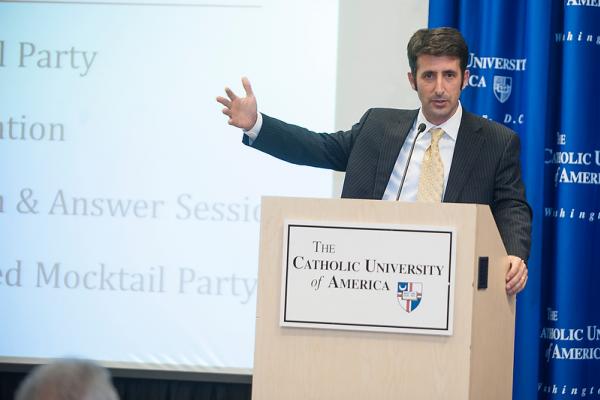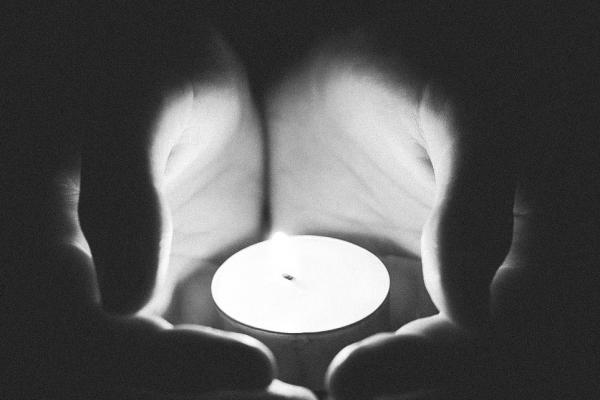Dozens of Catholic leaders are protesting the decision by the Catholic University of America to accept a large donation from the foundation of Charles Koch, a billionaire industrialist who is an influential supporter of libertarian-style policies that critics say run counter to church teaching.
Charles Koch and his brother, David, “fund organizations that advance public policies that directly contradict Catholic teaching on a range of moral issues from economic justice to environmental stewardship,” says a four-page letter to CUA President John Garvey, released Monday.
The letter was signed by 50 priests, social justice advocates, theologians, and other academics, including several faculty at CUA in Washington.
Do you believe in the spiritual realm? I mean really believe; not in your head — in your disciplines?
Do you believe that spiritual power can alter, transform, or even redeem social, institutional, structural and even legislative power?
I’ve been thinking a lot about this lately. I’m not sure I really believed … until recently.
On Sunday mornings, in the midst of our safe sanctuaries, our five-song worship sets, our 15-minute sermonettes and our one-hour services that can be timed with an egg timer, how does our worship and our practice offer witness to the reality of the spiritual realm? How do our disciplines engage the inner world beyond the good feeling we get from songs that comfort us? Comforting songs are valuable in our worship. In fact, God uses those songs to remind us of the ways the Holy Spirit interacts directly with us, knows us, and knows our most intimate needs. But how does our worship — how do our congregations’ spiritual disciplines strengthen our understanding and engagement with the powers, the principalities, and the world beyond our own homes and sanctuaries?
“For our struggle is not against enemies of blood and flesh, but against the rulers, against the authorities, against the cosmic powers of this present darkness, against the spiritual forces of evil in the heavenly places” (Ephesians 6:12).
With just a few days to go before Christmas, many Americans will be rushing around completing their Christmas preparations: doing their last minute shopping, finalizing travel plans, figuring out how to deal with awkward family dynamics. In many cases, they will be faced with what is popularly known as #firstworldproblems — problems of inconvenience of a privileged and affluent people: delayed flights, out-of-stock gift items, spotty cell phone coverage.
At the same time, many people, hidden amidst the consumer celebration that Christmas has become, will be struggling just to find their next meal, shelter, community, and hope.
Striking census bureau statistics released earlier this year paint a picture of an expanding American underclass, with 15% of Americans living at or below the poverty-line, 23% of children (the highest percentage of poor by age) living in poverty, and the evaporation of the American middle class.
On the one hand, at this time of year, our society is more aware of the poor. Holiday food collections, toy and clothing drives abound, as does the ubiquitous ringing of Salvation Army bells. And yet, in many ways the plight of the poor is more hidden by the bright lights and rush of the season.
The rhythm of the skies and seasons — the rhythm of the church year — both are ancient interlocking symphonies of light that call us to watchfulness and mindfulness. A small light can illumine vast spaces and dark corners of our selves. A light can reveal new aspects to things we thought we knew about our world. And, the light of knowledge can change perceptions about things we thought we understood.
As you read these words, there are tens of thousands of homeless children (perhaps more) on the streets in the United States. Reliable numbers are hard to find, because these children for the most part are invisible. You would probably not notice them if you saw them. Nevertheless, from law enforcement and other government reports, hotline statistics, and the experience of agencies such as youth outreach ministries, we know that homeless, runaway (or “thrown away”) children are part of our communities — eating at McDonald’s, riding the subways and buses, hanging out at the mall, talking on cellphones, and sitting in the park. What we don’t often see about their lives is that, as homeless youth, they are always vulnerable to the worst kinds of danger — from inadequate shelter, to sickness, to malnutrition, to physical violence, to terrible sexual exploitation.
We used to sing this song in Sunday School, as far back as I can remember, way back when I was learning to use a big-boy potty and tie my shoes. The little light was our faith in Jesus, and letting it shine was sharing it with others, who didn't know him. Jesus loved the little children, all the children of the world, red and yellow, black and white, they were precious in his sight, Jesus loved the little children of the world. He would make us FISHERS! of men, FISHERS! of men, FISHERS! of men, if we followed him, if we followed him, if we FAW! LOWED! HIM! I should dare to be a Daniel, dare to stand alone, dare to have a purpose firm, dare to make it known. Even if they fed me to the lions.
It took almost 30 years for me to really see "This Little Light" in action. Before that, it was mostly an ideal standard that made me feel guilty for not living up to it, a measuring stick that set me in competition with all the other little lights around me; if I shined a little brighter, you'd try too. But two years before Occupy Wall Street demanded economic reform at the national level, the candles lit in Charlotte, N.C., as hundreds of protestors marched on Bank of America and Wachovia in the fall of 2009. In the midst of the subprime mortgage crisis, with people facing ballooning interest rates and foreclosures on their homes, organizers delivered a theological statement against what they called "usury" — the Old Testament sin of collecting interest from the poor.



